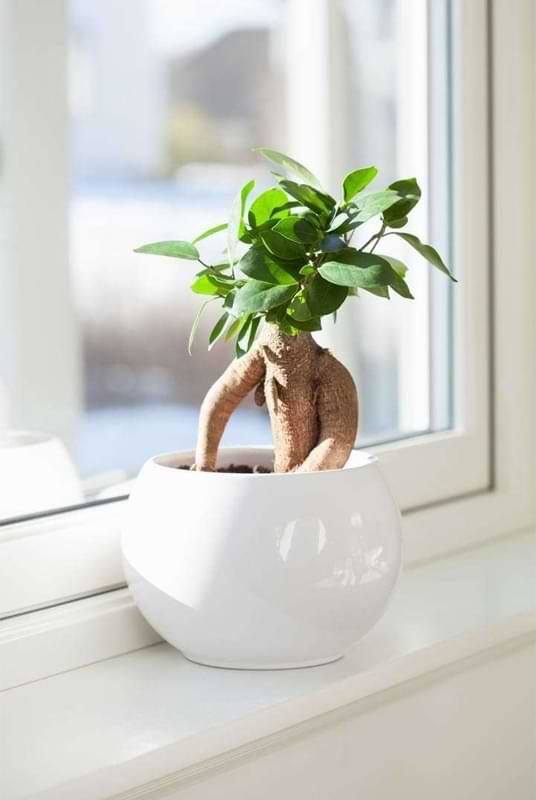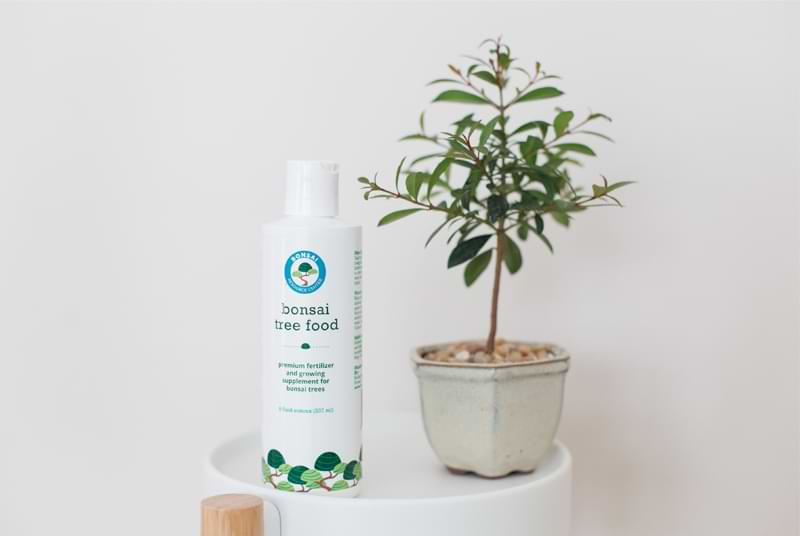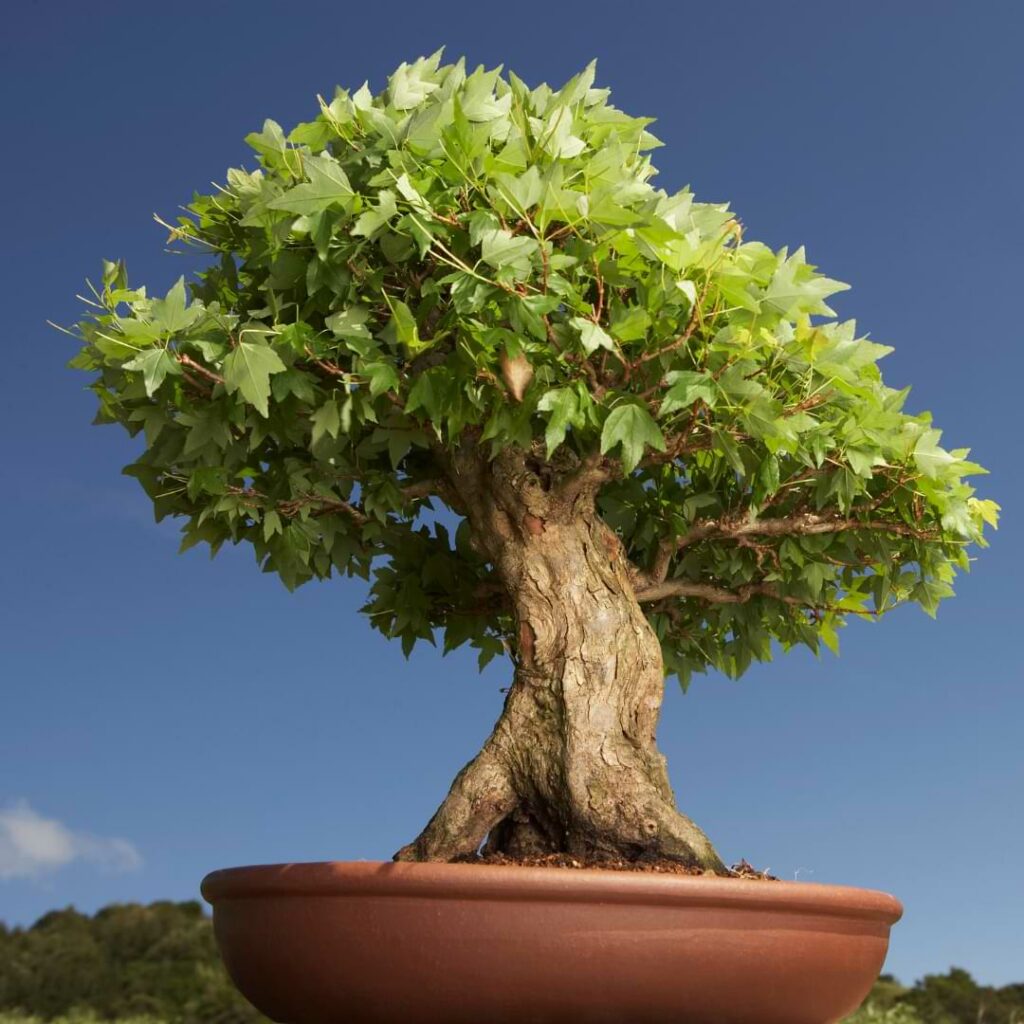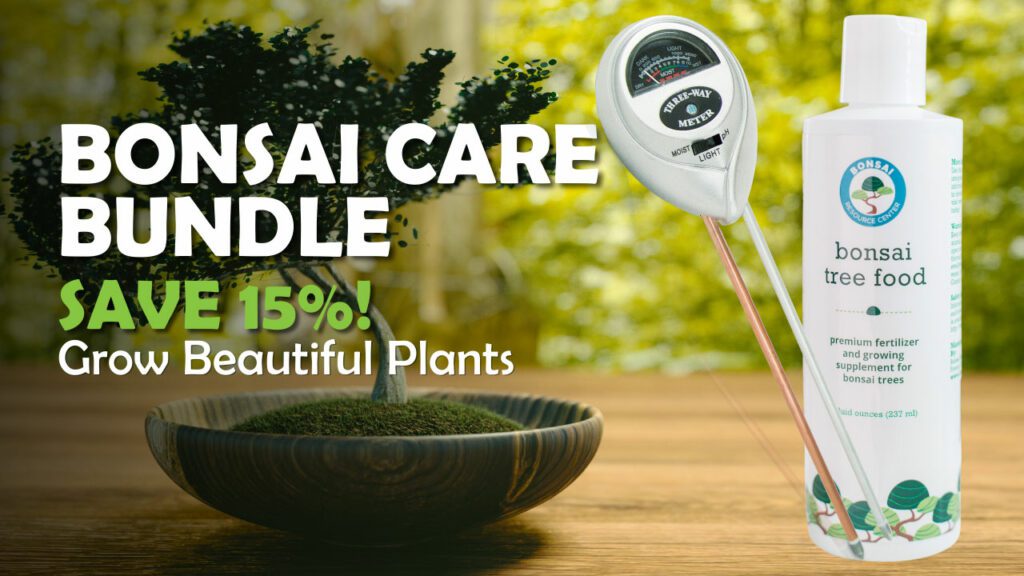While bonsai trees are often thought of as delicate plants, with proper care they can actually live for a very long time – some even centuries! Keep reading to learn about the typical Bonsai tree lifespan and how to properly care for your Bonsai so that it has a long and healthy life.
Life Expectancy Of A Bonsai Tree
The life expectancy of a Bonsai tree really depends on many things, including the type of tree it is, how well it is cared for, where it’s kept, and more.
Factors Affecting Lifespan
There are a few things that will affect the lifespan of your Bonsai tree. The most important factors are the species of your tree, how long the mother tree lived, how it’s cared for, and its environment.
So, how long do bonsai trees live? Taking into consideration all of the factors that can affect the lifespan of your tree, your tree could live to be more than 100 years old! Keep reading to learn about the factors that can affect your Bonsai tree’s lifespan.

The Species
Some species of bonsai, such as the Ficus, can live for centuries with proper care. Others, such as the Juniper, have a shorter lifespan of around 50 years.
The age of your tree is also a factor. A younger tree will generally have a longer lifespan than an older tree. This is because younger trees are still growing and have not yet reached their full potential. Older trees may be nearing the end of their natural lifespan and may not have many years left.
Longevity Of The Mother Tree
The mother tree can also affect the life expectancy of your Bonsai tree. If the mother tree was a relatively healthy, long-living species, then it’s likely that its offspring tree will live a similar life. You should always get your bonsai tree from a reputable plant grower, so you shouldn’t need to be concerned about your tree’s genealogy.
How It’s Cared For
Bonsai trees are delicate and require a lot of care. They need to be watered regularly, fertilized, and pruned. Pay attention to when your tree needs to be repotted. The type of tree will dictate how often it needs to be repotted, as well as the general health of the tree. All of this care will ensure that your bonsai tree has a long and healthy lifespan.
The environment where your tree lives can greatly affect its health and therefore, its lifespan. It is still a tree, so it will require a decent amount of light and nutrients to thrive. Keep this in mind when caring for your tree.
Maximise Bonsai Tree Lifespan
Bonsai trees are beautiful additions to any home, but they can be tricky to care for. With proper care, however, you can maximise your bonsai tree’s lifespan and enjoy its beauty for many years.
Giving your tree the right conditions to grow and thrive in is the best way to ensure you are maximizing your tree’s lifespan. This includes pruning your tree when needed, keeping it in the right soil, and providing the right amount of water for it.
Just as important is the temperature it’s kept at, the amount of sunlight it gets, using the proper fertile lister to feed it, and ensuring you take care of any pest problems your tree may encounter.
Read on for more information about each of these factors.
Pruning
Bonsai trees are often pruned to give them a more aesthetic appearance. However, pruning can also help to prolong the life of your bonsai tree. By carefully removing dead or dying branches, you can prevent your bonsai tree from succumbing to disease or pests. Additionally, pruning can help promote new growth, which can keep your bonsai tree healthy and vigorous.
Soil
Bonsai trees are often thought of as delicate plants, but with the right care, they can be quite resilient. One important factor in keeping your bonsai tree healthy is using the right type of soil.
There are many different types of soil available for bonsai trees, but not all of them are created equal. Some soils are too dense and will not allow the roots to breath, while others are too light and will not hold moisture well.
It is important to find a balance between these two extremes, and there are a few ways to do this. One option is to mix your own soil using ingredients like pumice, Akadama clay, and lava rock. Another option is to purchase a pre-mixed bonsai soil from a nursery or garden center.
No matter what type of soil you use, it is important to make sure that it is well-draining. Bonsai trees need to be watered regularly, but they cannot sit in wet soil for too long or their roots will rot. To ensure good drainage, add some gravel or sand to the bottom of your pot before adding the soil.
Watering
Bonsai trees are delicate and require a lot of care, which includes the right balance in their watering schedule. Over-watering is one of the main reasons why bonsai trees die, so it’s important to be careful not to water too often.
The best way to water a bonsai tree is to use a watering can with a long spout. This will allow you to control the amount of water that you’re giving to the tree. You should also water the tree in the morning so that the leaves have time to dry before nightfall.
It’s important to check the soil of your bonsai tree before watering it. If the soil is dry, then you can give the tree a good watering. If the soil is already moist, then you don’t need to water the tree.
When you’re watering a bonsai tree, you should also be mindful of the humidity levels in the room. If it’s dry, then you might need to water the tree more often. If it’s too humid, then you might need to water the tree less often.
Temperature & Sunlight
Bonsai trees are very sensitive to temperature changes. They should never be allowed to freeze, so if you live in an area with cold winters, it’s important to keep your bonsai tree indoors, at least for the winter months. The ideal temperature range for a bonsai tree is between 60 and 80 degrees Fahrenheit.

Fertilizing
Bonsai trees are long-lived and can survive for centuries with proper care. However, they will only reach their full potential lifespan if they are fertilized regularly.
Fertilizing bonsai trees is important because it replenishes nutrients that are lost during the growing season. It also helps promote new growth, which is essential for keeping your bonsai tree healthy.
There are many different ways to fertilize bonsai trees, but the most important thing is to use a fertilizer that is specifically designed for bonsai trees. This Bonsai Plant Food contains the perfect balance of nutrients that bonsai trees need in order to thrive.
If you are unsure of how often to fertilize your bonsai tree, it is best to consult with a professional. They will be able to give you specific instructions based on the type of bonsai tree you have and its particular needs.
Pests and Diseases
Bonsai trees are susceptible to the same pests and diseases as other houseplants. However, because they are often kept indoors, they may be more vulnerable to infestations.
Common pests that can affect bonsai trees include aphids, scale insects, mites, and whiteflies. These pests can cause leaf drop, stunted growth, and deformed leaves. To control pests, it is important to regularly inspect your tree for signs of infestation and treat it promptly with an appropriate insecticide or miticide.
Diseases that can affect bonsai trees include root rot, powdery mildew, and leaf spot. These diseases can cause yellowing leaves, wilting, and defoliation. To control diseases, it is important to keep your tree healthy by watering it properly and avoiding over-fertilization. If your tree does become infected, you may need to treat it with a fungicide or bactericide.
Best Types Of Bonsai Tree For Longevity
Some species of tree are simply more hardy than others and will better withstand the challenges of indoor life. By researching and choosing the right type of tree before buying your first bonsai tree, you’ll be able to choose the best variety for you and your home, and you’ll have a decent idea of how hardy the type of bonsai tree you get will be.
- Azalea
- Azaleas are a type of bonsai tree that can live for many years with proper care. They are known for their beautiful flowers, which bloom in shades of pink, white, and red. Azaleas require regular watering and fertilizing, and should be protected from frost in winter. With proper care, an azalea bonsai can live for decades.
- Cherry
- Cherry bonsais are popular because of their small size and delicate pink blossoms. The cherry bonsai tree is very popular because of how beautiful it is. This type of bonsai tree is slightly more delicate than some of the other types, but the beauty it can bring to your space truly makes up for it.
- Cypress
- Cypress bonsai trees are known for their long lifespans. In fact, it is not uncommon for cypress bonsai trees to live for hundreds of years. This is one of the reasons why cypress bonsai trees are so popular among bonsai enthusiasts.
- While the exact lifespan of a cypress bonsai tree will depend on a number of factors, such as the tree’s species and growing conditions, it is safe to say that cypress bonsai trees can easily live for decades, if not centuries, making it a great family heirloom option if you’re interested in such a thing.
- Ficus
- Ficus bonsai trees are popular indoor plants because they are relatively easy to care for and can live for a long time. The ficus bonsai is increasing in popularity every year, it seems!
- Most ficus bonsai trees will live for at least 10 years and some may even survive for 100 years or more! Of course, the lifespan of a ficus bonsai tree is not infinite and there are some things that can shorten the life of these delicate plants.
- Fig
- The fig bonsai is another very popular option. It’s one of the more easily found types of bonsai trees, so many people think of the fig bonsai when someone mentions a bonsai tree. These trees follow the same care as other bonsai trees, and can live to be very old with the proper care.
- Kendar
- Kendar bonsai trees are another type of bonsai tree with a long lifespan. They follow the same care guidelines as most other bonsai trees and can live upwards of 100 years or more when taken care of properly.
- Pomegranate
- Pomegranate bonsai trees are one of the most popular types of bonsai trees. They are known for their long lifespan and their ability to thrive in indoor conditions. Pomegranate bonsai trees can live for many years, with some specimens reaching over 100 years old.
- They are relatively easy to care for as far as bonsai trees go, and as long as they are given adequate light and water, they will do well indoors. They are another really beautiful option when looking for a bonsai tree to brighten up your home.
How Long Do Bonsai Trees Live FAQ
What Age is the oldest bonsai tree?
The oldest Bonsai tree in the world is a ficus bonsai tree in Crespi, Italy. This amazing tree is over 1000 years old!
Bonsai Tree Lifespan Final Thoughts
Bonsai trees are an excellent addition to any home, and even though they may be slightly more difficult to care for than a lot of other indoor plants, bonsai trees can be just what you and your home needs. Not only do they look amazing when cared for, but they can live old enough to be passed down to the next generation, and possibly even the generation after them.
Bonsai With Us!
The Bonsai Resource Center is here to help you learn how to grow bonsai and provide you with the tools you need to keep your tree healthy and strong. Explore our other articles, visit our online shop, and connect with other bonsai lovers in our Facebook group to learn everything you need to know about this rewarding hobby!
More Bonsai Tree Care Resources
The Best Bonsai Tree Benefits for Your Body and Soul
The Ultimate Bonsai Plant FAQ Cheat Sheet



